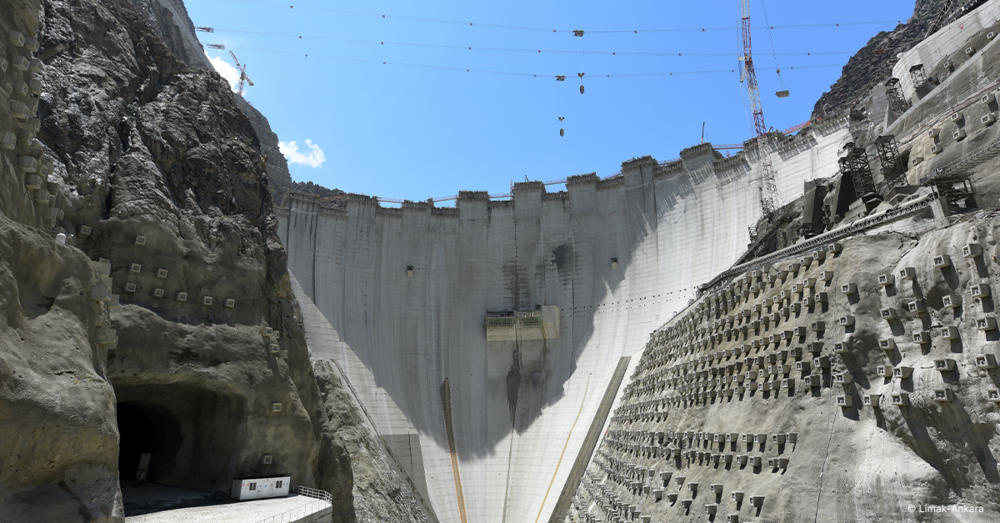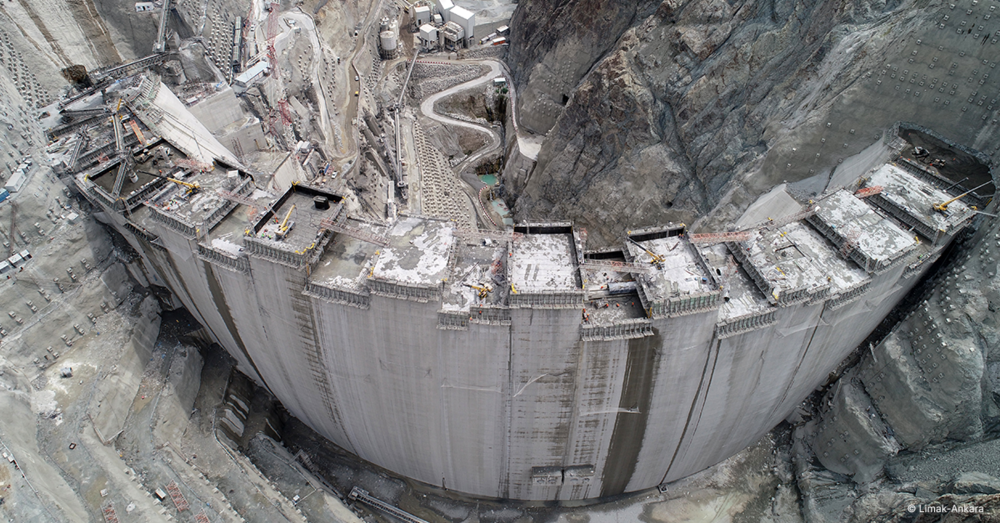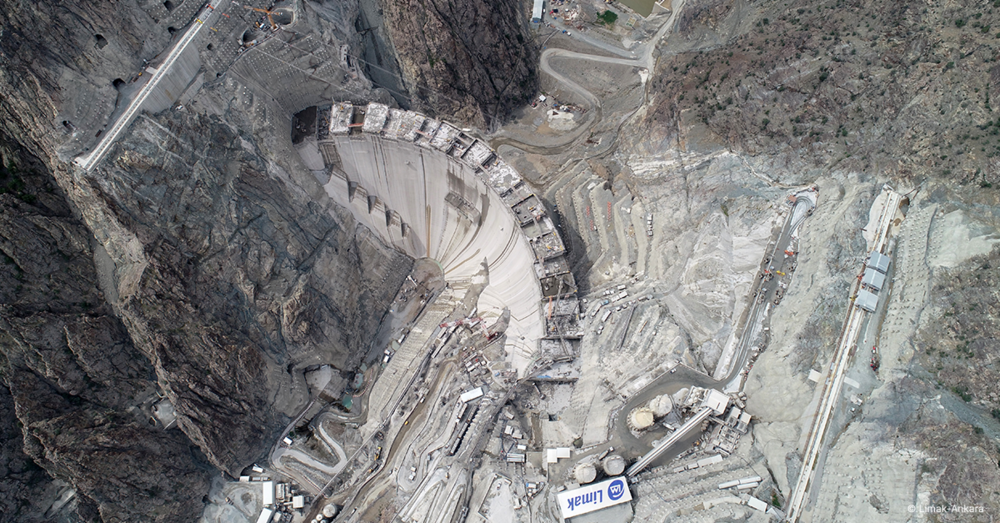In December 2012, when the contract was awarded to the Limak-Cengiz-Kolin consortium by the client DSI, the dam was the highest in Turkey and the third highest arch dam worldwide. A very particular feature of the project were the steep natural slopes as well as the cut slopes of almost 500m in height which were required to construct the cable crane and to excavate the dam cut-off.
The Yusufeli reservoir in Northeast Turkey has a capacity of 1,080hm³ and a surface area of 33.63 km³. The dam features a double-curved arch wall containing around four million cubic metres of concrete, the top of the dam has a crest length of 490m and the crown is 8m thick.
After years of intensive geological and geotechnical field works, 3D geological as well as geotechnical modelling, cut slope excavation and support design and advisory work by geologists and civil engineers of the iC group (Salzburg, Vienna, Ljubljana) the concreting work started in August 2018. The height of the concrete wall above the valley floor exceeded 220m in June 2020. At this point just another 55m had to be built before the dam was completed with a final height of 275m. Since concreting work began, between 6,500 and 7,000m³ of concrete have been poured every day, reaching three million cubic metres on 8 June 2020.
Due to the dimension, steepness and the extreme height of the cut slopes, the intensive jointing and the relaxation of the rock mass observed during construction, this was a geotechnically highly complex process. The detailed design of the dam and HEP was carried out by the design office Su-YapI Mühendislik, Ankara, and the dam specialists from ARQ Consulting Engineers, Pretoria. For two years, our geotechnical design and advisory work in connection with the up to 440 m high cut slopes was supported by fixed lnSAR radar monitoring in cooperation with the Institute for Engineering Geology of Graz University of Technology.






